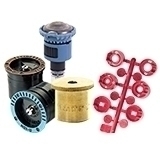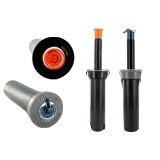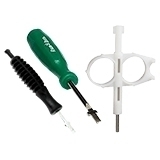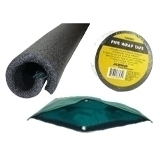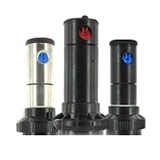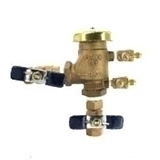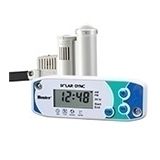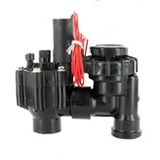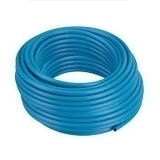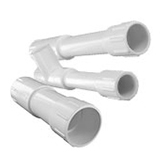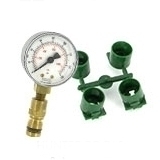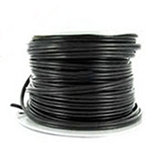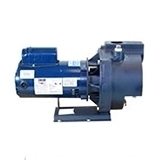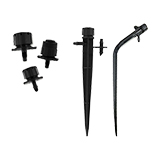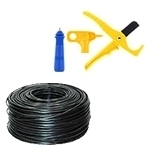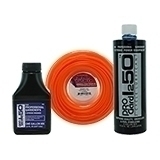Table of Contents: Eco Gardening
Eco gardening isn’t just a passing trend—it’s a way to cultivate harmony between your home and the environment. By digging into sustainable practices, you can nurture a thriving garden while treading lightly on the planet.
When it comes to irrigation, every drop counts. Thoughtful, eco-conscious choices can help you conserve water, shrink your utility bills, and keep your plants flourishing without waste. Let’s unearth the smartest ways to weave sustainable irrigation into your ecogarden!
Why Ecogardens Matters
Eco gardening is about creating harmony between your garden and the environment: supporting biodiversity, protecting natural resources, and contributing to a greener future. It focuses on practices that conserve resources, not only to reduce your garden’s ecological footprint but also to make it more resilient to fluctuating weather conditions. With critical challenges such as water scarcity, transitioning to an ecogarden is a serious step toward sustainability.
Water-Wise Eco Gardening Principles
Saving water doesn’t mean sacrificing the beauty of your garden.
By making thoughtful planting choices and managing water use effectively, you can create a lush, thriving landscape that’s kind to the environment:
- Choose Native Plants: Native plants are naturally adapted to your region’s climate, requiring less water and care than exotic species and grasses such as St. Augustine, which can require frequent watering—up to 1.5 inches per week. Native plants thrive on local rainfall patterns, meaning your sprinkler system can work less, conserving water and energy.
- Implement Mulching: Mulch helps retain soil moisture, reducing evaporation and the need for frequent watering. Organic mulch also enriches the soil, making it a dual-purpose tool for sustainability.
- Use Companion Planting: Group plants with similar water needs to avoid overwatering some while under-watering others. This technique also optimizes your irrigation zones for efficiency.
The Role of Sprinkler Systems in Eco Gardening
Sprinkler systems play a crucial role in maintaining a lush garden, but traditional setups often lead to wasted water. Eco-friendly irrigation systems can make a significant difference.
- Conserve Water: Proper sprinkler placement and timers can reduce water usage by targeting specific areas with precise amounts. This ensures that no water is wasted on areas that don’t need it, such as sidewalks or driveways.
- Lower Bills: Eco-friendly gardening practices can cut water usage—and your water bill—by up to 50%. Using less water means lower utility costs, saving you money over time. Smart irrigation systems can also help detect leaks or inefficiencies, preventing unexpected spikes in your water bill.
- Grow Healthier Plants: Proper irrigation can protect plant roots by reducing the risk of overwatering. By not overwatering plants, you’re encouraging deeper root growth, improving the overall health and appearance of your plants.
Eco-Friendly Features in Home Irrigation Systems
Modern irrigation systems can do more than just water your lawn—they can actively reduce water waste and make it easier to care for your garden. With the right features, you’ll save resources while keeping your outdoor space vibrant.
Here’s what to look for when upgrading to a sustainable system:
- Smart Controllers: WiFi-enabled or smart controllers allow you to adjust watering schedules based on weather forecasts and soil moisture levels. These systems can detect rain and pause irrigation to prevent unnecessary watering.
- Drip Irrigation: Drip systems deliver water directly to plant roots, minimizing evaporation and runoff. They’re ideal for garden beds, shrubs, and even vegetable patches.
- Rain Sensors: Installing rain sensors ensures your sprinkler system shuts off automatically during rainfall. It’s a simple addition that prevents waste and protects your plants from overwatering.
- Low-Flow Sprinkler Heads and Rotors: Replace traditional sprinkler heads with low-flow models or high-efficiency rotors that use less water while providing even coverage. Rotors distribute water more slowly and evenly, reducing runoff and allowing soil to absorb moisture more effectively. This ensures your landscape stays hydrated without wasting water.
How to Set Up an Ecogarden Sprinkler System
Creating an eco-friendly sprinkler system is about combining smart planning with efficient tools. By tailoring your setup to your garden’s needs, you can keep plants healthy while conserving water.
- Assess Your Garden’s Needs: Divide your garden into zones based on plant types, sunlight exposure, and soil conditions. This zoning ensures each area receives the right amount of water.
- Install Efficient Irrigation Tools: Choose tools such as drip emitters, soaker hoses, or rotary nozzles to match the unique needs of each zone.
- Automate Smart Features: Program your smart controller to water during the early morning or late evening to minimize evaporation.
- Perform Regular Maintenance: Check for leaks, clogged nozzles, or misaligned sprinkler heads. Fixing these small issues can significantly conserve water over time.
Feed Your Garden with Organic Fertilizer
Healthy soil is the foundation of any thriving ecogarden, and organic fertilizers provide essential nutrients while improving soil structure naturally. Unlike synthetic fertilizers, which can leach harmful chemicals into waterways, organic options such as compost, manure, and fish emulsion can sustainably nourish your plants.
These natural fertilizers release nutrients slowly, promoting stronger root growth and reducing the need for frequent applications. Plus, they support beneficial microbes that enhance soil health—giving your garden a long-lasting boost while keeping the environment safe.
Grow a Greener Tomorrow with an Ecogarden
Eco gardening isn’t just about today—it’s about planting the seeds for a healthier, more sustainable future. By making mindful choices in your garden, you’re not only conserving resources but also creating a vibrant, self-sustaining ecosystem that gives back to the planet.
With every water-wise decision and environmentally-friendly adjustment, your ecogarden will become a living testament to the power of small, intentional changes. Keep nurturing, keep growing, and watch as your green space flourishes—one thoughtful choice at a time.
FAQs about Ecogardens
What is the meaning of eco gardening?
Eco gardening is a method of gardening that works in harmony with nature to conserve resources and protect the environment.
It focuses on reducing water waste, avoiding chemical fertilizers, and using sustainable practices such as composting and planting native species. The goal is to create a self-sustaining garden that supports local biodiversity while minimizing environmental impact.
How to start an eco-friendly garden?
First, assess your local environment and choose native or drought-tolerant plants that excel in your climate with minimal care. Incorporate sustainable watering methods such as drip irrigation or rain barrels to conserve water.
Use organic compost or mulch to enrich the soil and reduce the need for synthetic fertilizers. Finally, focus on creating a balance by planting a variety of native flowers, vegetables, and shrubs to support pollinators and other wildlife.
What is sustainable gardening?
Sustainable gardening is an approach that prioritizes long-term environmental health. It involves practices that conserve water, improve soil quality, and reduce waste.
Eco gardening might include using natural fertilizers, minimizing lawn space in favor of diverse plantings, or incorporating renewable resources such as greywater systems. The ultimate aim is to create a garden that thrives without depleting natural resources or harming the surrounding ecosystem.
And if you want to stay up-to-date on the latest sprinkler warehouse news and make the most out of all of our one-of-a-kind promotions, join the IrriGator community today. Happy watering, IrriGators!


